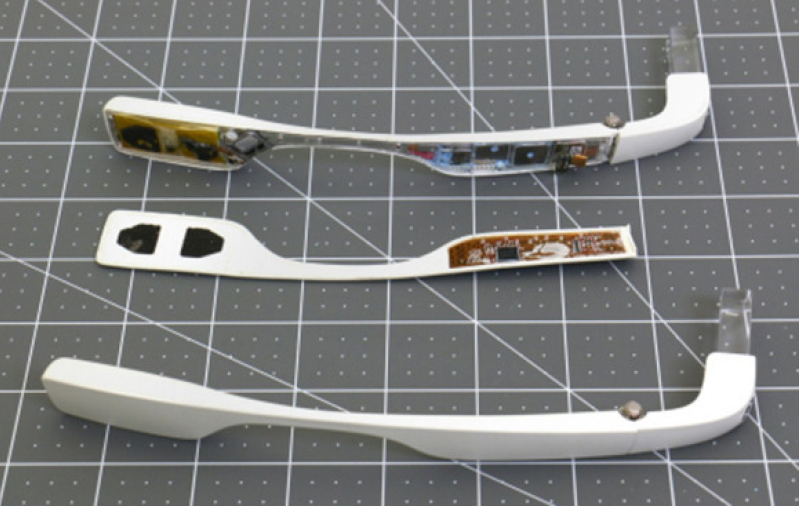
There are some devices that are made that can easily change the world. Apple knew what it had when it introduced the iPhone, and it began a smartphone mobile revolution. Google didn't announce its wearable head-mounted display with similar fanfare. Instead, it just sort of brought it out and then just allowed people to try it out. This test-marketing never lead to any mass-produced of the device from the company, but that could change. There could easily be a Google Glass 2, or Enterprise Edition, and it still has world-changing potential if it ever has an official release date.
We have previously written about how there could be a new Google Glass project known as Project Aura, which could change the design of the first Google Glass. According to PC World, an FCC filing published yesterday reveals the next version of Google Glass.
The photos don't reveal much of a nose bridge, and it doesn't wrap around the user's face. There seems to be some assembly that can hold the glass prism so it can fold down against the earpiece. This could also be a larger prism, which would suggest a larger field of view.
The design also seems to suggest that one can push the hinge down and put the new version of Glass into a pocket protector. Also, the FCC SAR report makes it clear that the new version of Google Glass can support 5 GHz Wi-Fi as earlier reports have suggested.
On 9to5 Google, there is a manual submitted to the FCC on June 12 referring to the device as "GG1". On this manual, it has this written: "Press the camera button to take a photo. Hold it down to record a video. The green light shows when the camera is on."
The Google Glass has kind of an unconventional history. After many rumors of development, it was predicted that the Google Glass would be the start of some wearable revolution, but Google didn't seem to put the product on the market after that.
Instead, they were sending Google Glass to developers or those that were willing to pay the right price, which meant they were more testing the market for this wearable rather than just outright being the first to have such a product. It was an interesting move for the company, and starting in 2013, you would see people wearing them, as they were part of the #IfIHadGlass program. The beta testing ended in January of this year, but without any method for an average user to purchase them, and the prototypes were a very elevated price at over $1,000,
If we are heading into this Google Glass age, it should happen soon. Assuming that Google can get this working, they would probably show it off at the Google I/O Developers conference in 2016. Then they probably wouldn't be able to release it until much later, like a year from then.







